I think this time of year is the best time for board games. It’s starting to get too chilly to be outside, the shadows are getting longer, and we’re all in the mood for something spooky and scary. While macabre and occult board games never really leave the rotation in my house, I always am on the lookout for new additions every year. And Avalon Hill has come out with a doozy of a game this year with Betrayal: Deck of Lost Souls, the newest addition to their line of Betrayal products and the most condensed and accessible yet.
What’s In The Box?
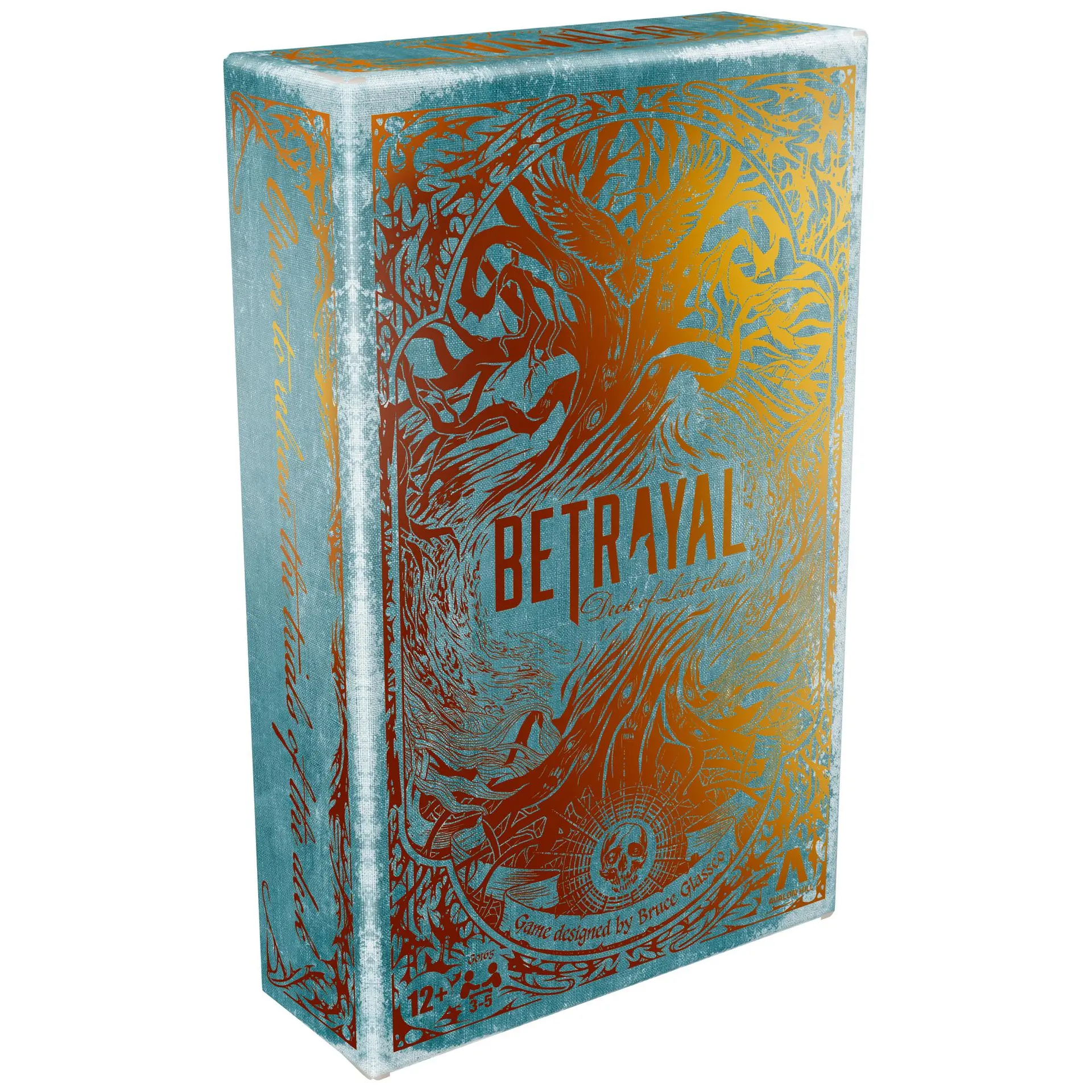
- 6 Curse cards
- 34 Item cards
- 4 Special Item cards
- 18 Minor Omen cards
- 16 Major Omen cards
- 5 Character cards
- 6 Journey cards
- 5 Reference cards
The main draw with Betrayal: Deck of Lost Souls is the art. Truth be told it’s clear that’s where most of the work for this game went but I’m not even mad about it because look at it. Betrayal has had OK art in its base game so it was a bit of a shock to see what feels like a truly artistic tarot-style deck published by Avalon Hill. Every single card is absolutely layered with swirling magic, arcane symbols, and grotesquries that the normal Betrayal game can only hint at. Each playable character is equal parts beautiful and monstrous befitting someone who can be both hero and traitor. The curses ramp up the horror with plenty of skulls and body parts swirling in shadow and fire. The only drawback is that amongst all the filligree and busy art it can be a…bit hard to read the words sometimes since the script they chose is a spindly handwriting font. Which is great for the vibes, don’t get me wrong, but you will find yourself squinting a few times to see what some cards actually do.
How’s It Play?
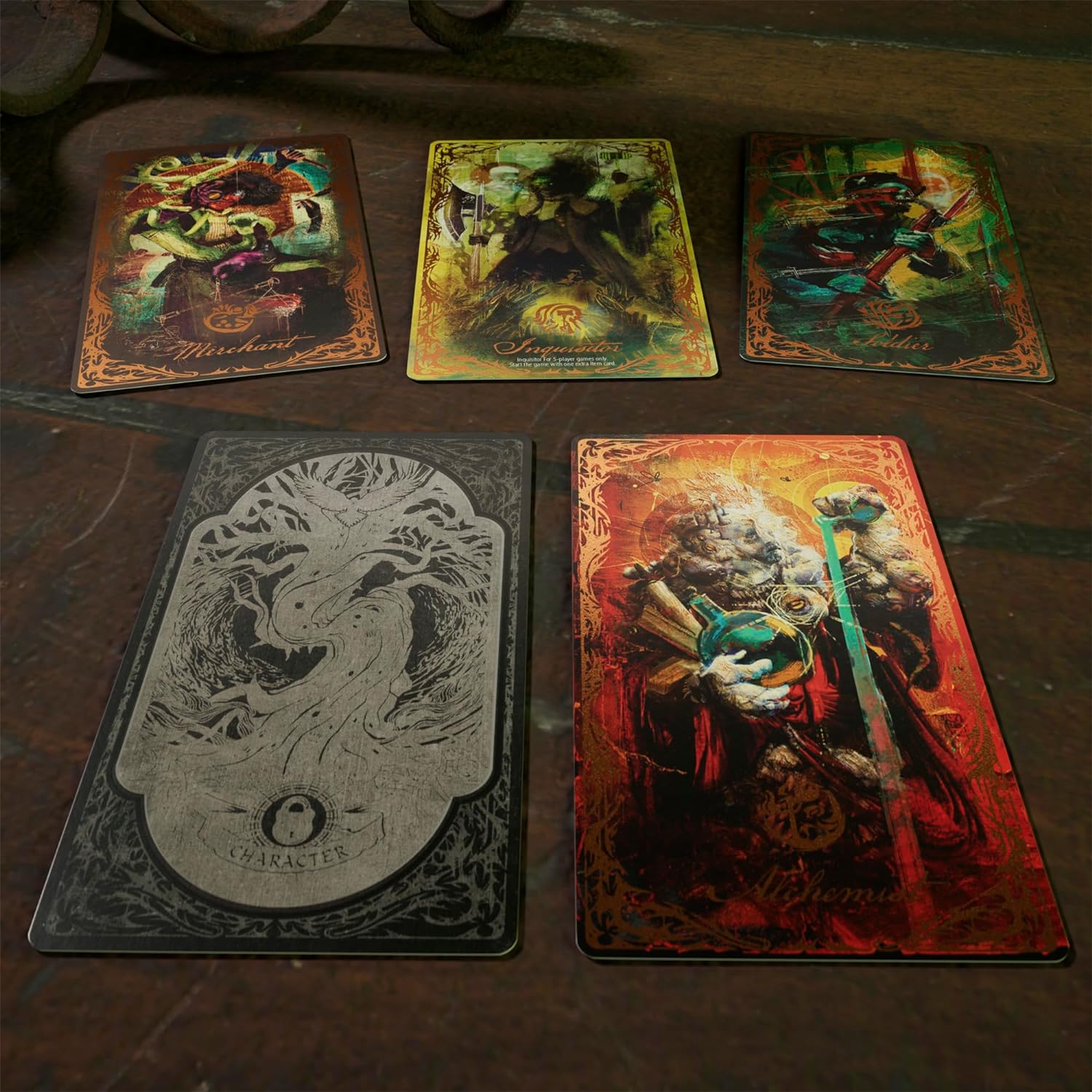
Like every other Betrayal title, Deck of Lost Souls follows a gang of explorers facing the occult with the twist that one of them MAY be a traitor trying to gain power from the darkness. Each player gets an explorer: The Alchemist, The Merchant, The Occultist, The Soldier, or the Inquisitor (if you’re playing a 5 player game). Each one (except the Inquisitor) can use only a few items to help beat back the darkness, but beyond that any difference is purely aesthetic. The traitor is determined by random chance at the start, and the selection is set up so that there’s always a chance you won’t have a traitor during the game.
Players are each dealt 4 items, 3 Minor Omens, and 2 Major Omens (all of which come directly from Betrayal At House On The Hill). Between the players are six Curses, the evil that the items can help dispel and the omens can give warning of. Some of these items are usable by you, others can only be used by the other explorers. The Minor Omens are USUALLY easier to dispel, but not always. It is your job to control the omens, find the right curses, and destroy them before you run out of items or time.
On your turn you’ll go through two phases. In The Cooperation Phase, you can play an item, give another player an item (and get one in return if they like), or discard and draw. You need to make sure the item in front of you is one you can use, and also pay attention to if an item is one use only or not. Cards in front of you can often be used multiple times to defeat different omens, but are also in danger of discard effects AND are obvious to the traitor. These items also might have secondary effects that point to certain curses or give you recurring abilities. Some items also do nothing for anyone, which makes them a prime target for discards. The higher the difficulty of the game, the more of these useless cards there are. And I can confirm the more there are the HARDER the game gets, to a fairly impressive degree.
The second part of your turn is the Omen Phase, where you play an Omen from your hand and work with your fellow explorers to defeat it by either playing items or using the existing ones in front of each explorer. When an omen is defeated, you get a boon, but if you’re unable you will pay a penalty. There’s also four special items at the bottom of the item deck which you’ll need to get to the bottom of to beat certain omens, especially the Major ones.
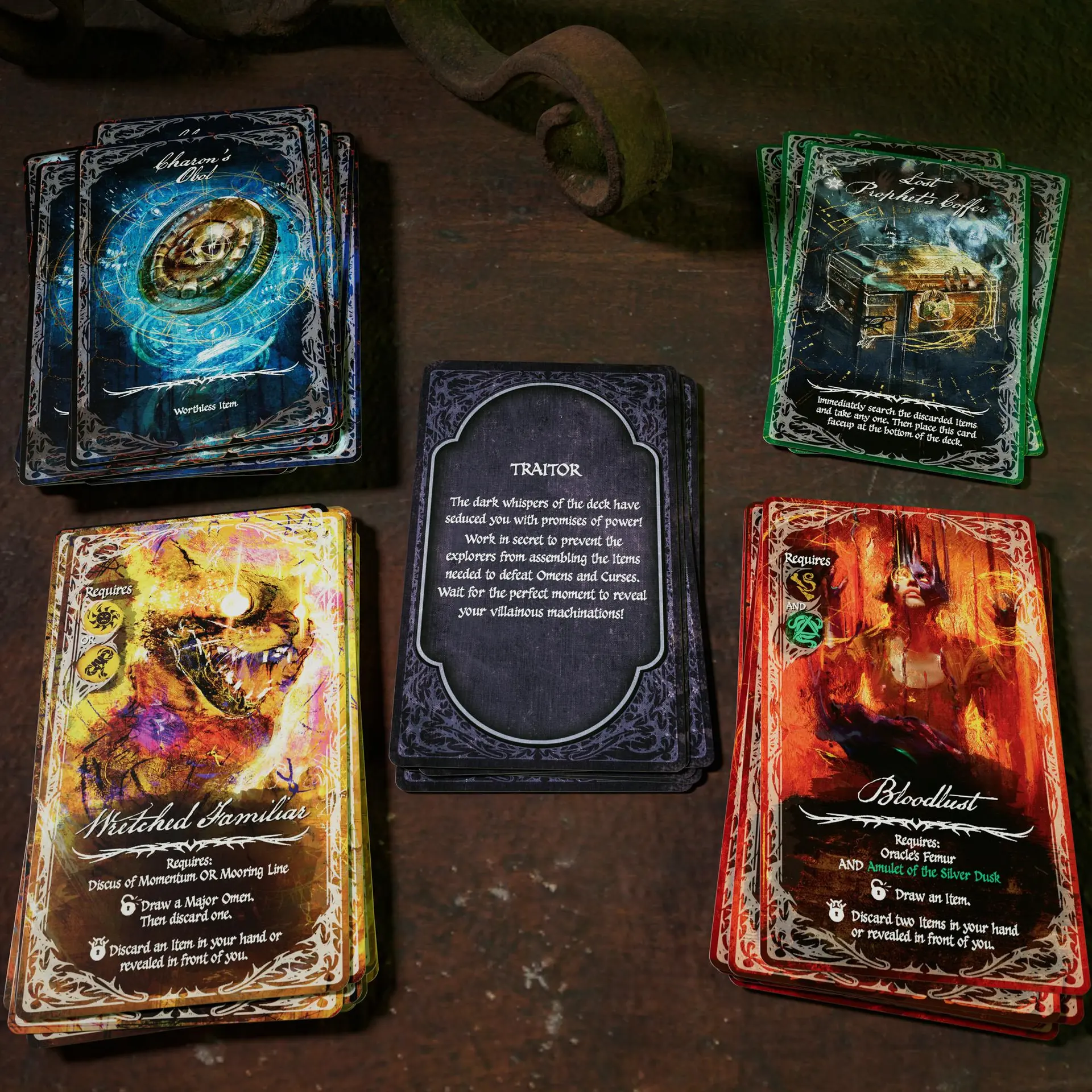
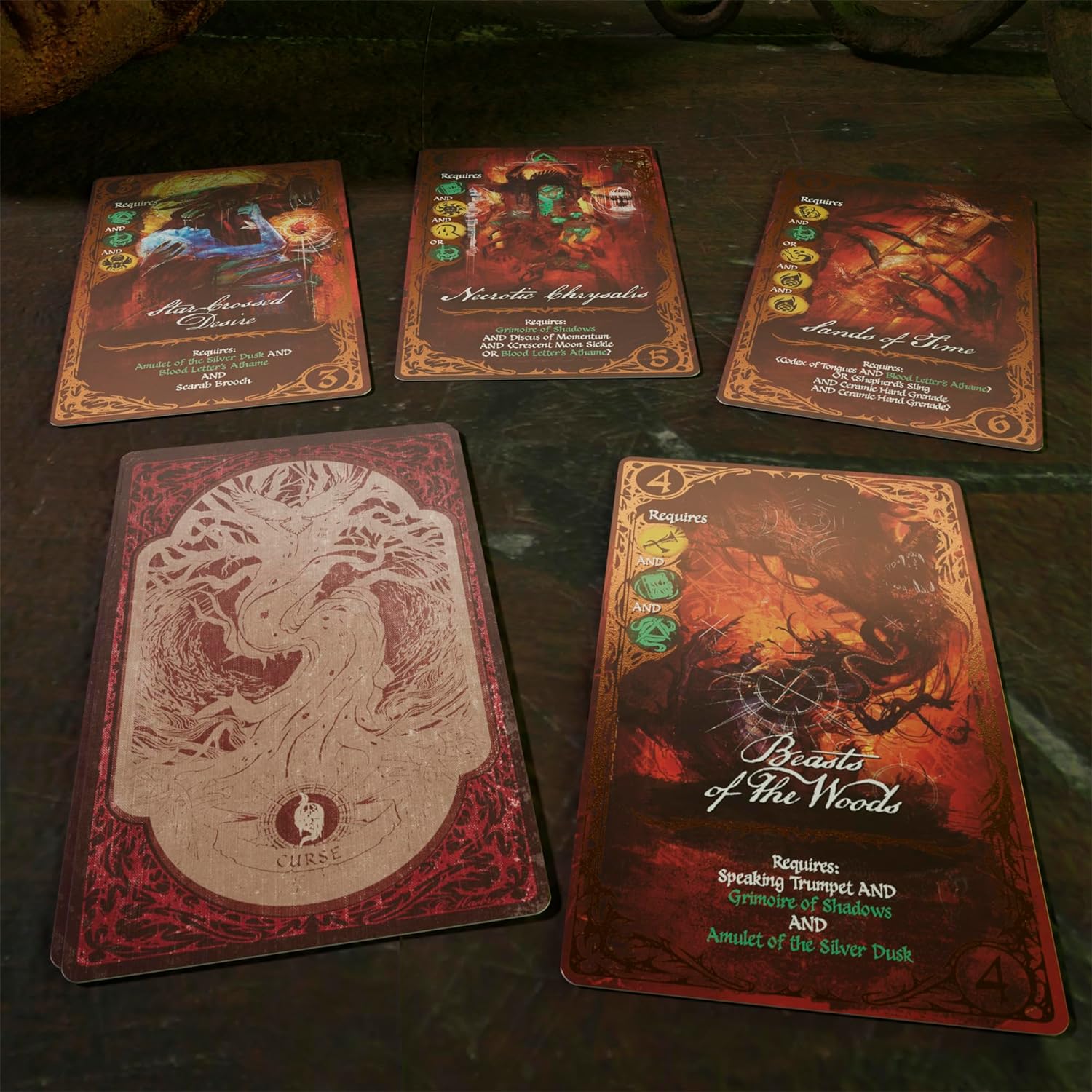
The relative simplicity of Deck of Lost Souls means that if there is a traitor, their tactics in order to win are rather limited. Your main ways to sabotage the explorers is hording useful cards and lying about having them, playing unbeatable omens to get rid of useful items, and get the explorers to lose items as fast as possible. When you are revealed, by choice or by discovery, you get rid of your items, get only omens, and work openly to deplete the explorers of their items. The detection part is honestly a bit hard if your traitor has any sort of good game face, but they can only do so much which makes it feel a LITTLE more balanced. You can also accuse a traitor any time you play a Major Omen, meaning that there’s plenty of chances to figure the traitor out before they can do too much damage.
Victory is achieved for the explorers in one of two ways. If there is no traitor, you simply need to get the items needed to defeat four of the six curses. If there IS a traitor, however, then the players will have to suss out with hints (some provided by the traitor themself) which of the six Curses is the “true” curse and then have the items to defeat it. Part of the Traitor’s strategy is steering the hint distribution towards a Curse that the explorers can’t beat. The Traitor also wins (or the Explorers all lose) when an Explorer has no items in hand or in play when a Major Omen has been played.
The Verdict?
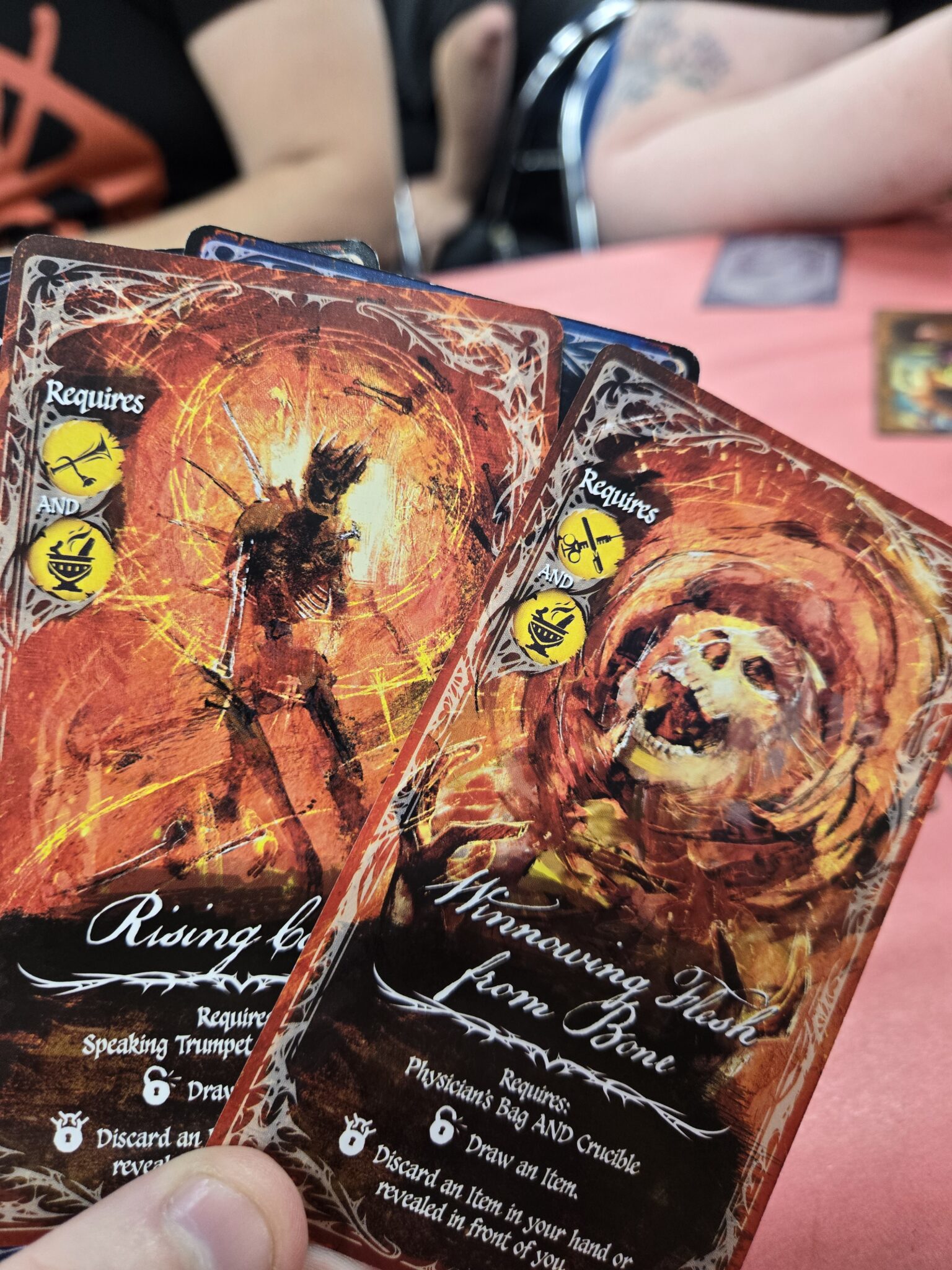
I’m absolutely in love with Betrayal: Deck of Lost Souls and that’s entirely down the aesthetics. Everything about it is expertly done and beautifully horrific, something straight out of The King In Yellow. From the box to the artwork to even the font chosen (however hard it is to read sometimes) it really feels like you’re handling a cursed object of some kind. The gameplay is easy to grasp and moves quickly, giving a fair amount of difficulty without straining too hard against its constraints as a card-based game. The Betrayal formula is popular for a reason, and Deck of Lost Souls does a great job condensing it down into pocket-size. Plus there’s plenty of ways to customize the game to make it harder or more complex which means this can be an easy staple in your Halloween board game plans for a good while.
You can grab a copy from the Hasbro Shop, Amazon, or your FLGS at an MSRP of $19.99.
Images via Avalon Hill
Have strong thoughts about this piece you need to share? Or maybe there’s something else on your mind you’re wanting to talk about with fellow Fandomentals? Head on over to our Community server to join in the conversation!

